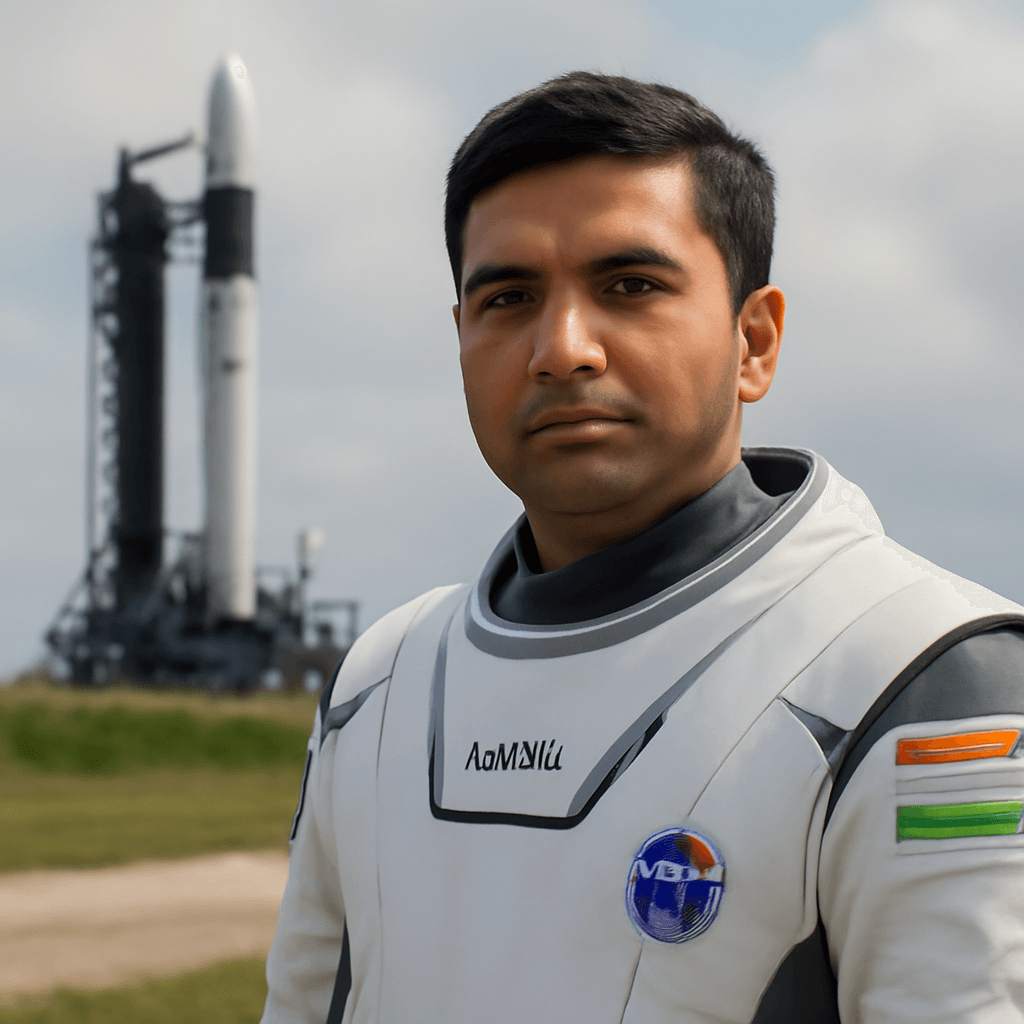Axiom-4 Crew Prepares for Earth Return After 20-Day Space Expedition
After an impressive 20-day stint aboard the International Space Station (ISS), the Axiom-4 mission is poised to enter its final phase. Indian astronaut Group Captain Shubhanshu Shukla, alongside Commander Peggy Whitson, Slawosz “Suave” Uznanski-Wisniewski, and Tibor Kapu, is gearing up to depart from the orbital laboratory and safely return to Earth.
Undocking and Splashdown Schedule
Preparations for undocking began Monday afternoon, July 14, 2025, with the crew sealing the hatch of their SpaceX Dragon capsule, named "Grace," at 2:00 pm IST. By 2:25 pm IST, all astronauts were securely inside the spacecraft. Following final system checks, undocking operations commenced around 4:15 pm IST, with the actual separation from the ISS's Harmony module expected near 4:35 pm IST (7:05 am EDT).
The spacecraft's return trajectory aims for a splashdown in the Pacific Ocean off the California coast, scheduled for approximately 3:00 pm IST (9:30 am GMT) on Tuesday, July 15. Given the unpredictable nature of atmospheric re-entry, NASA and mission controllers have incorporated a one-hour flexibility window to adjust for weather and other variables.
Indian Union Minister for Science & Technology and Earth Sciences, Dr. Jitendra Singh, underscored the mission's meticulous timing, noting the window provides essential operational assurance for a safe return.
Scientific Endeavors: Shukla's Groundbreaking Experiments on the ISS
Group Captain Shubhanshu Shukla’s time in space was more than symbolic; it was deeply scientific. His primary focus included pioneering studies on space microalgae—microscopic organisms with the potential to revolutionize long-duration space travel by supporting sustainable food production, oxygen generation, and biofuel synthesis.
In particular, Shukla conducted centrifugation experiments on cyanobacteria. By comparing two strains under microgravity conditions, the team sought to understand how the absence of Earth's gravity affects their growth patterns, cellular mechanisms, and biochemical functions. Such insights are critical for developing life support systems that could sustain future crewed missions to the Moon, Mars, and beyond.
These specialized studies are part of a broader portfolio of over 60 scientific experiments conducted by the Ax-4 crew—ranging from biomedical research to materials science—reflecting the diverse scope of private-sector-supported space exploration.
Expert Perspective: The Broader Implications of Private Astronaut Missions
The Axiom-4 mission exemplifies the increasingly vital role private companies play in low Earth orbit operations. By ferrying private astronauts and researchers, entities like Axiom Space are democratizing access to space, accelerating innovation, and laying the groundwork for commercial space infrastructure.
For the United States and global space agencies, missions like Ax-4 offer a testing ground for public-private partnerships and help assess the viability of extended human presence in space through sustainable biological systems, such as microalgal cultivation.
On the policy front, the mission highlights the importance of international collaboration. With representatives from multiple countries aboard, Axiom-4 illustrates how scientific diplomacy can help transcend terrestrial geopolitical tensions.
The Human Element: Reflecting on a 20-Day Space Journey
Beyond experiments and engineering, the psychological and physical endurance required for a 20-day mission cannot be overstated. For Captain Shubhanshu Shukla, returning to Earth's embrace will mark the beginning of a 22-hour readjustment period—a critical phase where astronauts reacclimate to gravity and the routines of ground life.
This homecoming symbolizes not just a personal milestone but a beacon of inspiration for aspiring scientists and explorers in India and around the world, emphasizing how perseverance and scientific curiosity propel humanity's reach.
Looking Ahead: What's Next for Axiom and Space Science?
As the Ax-4 crew prepares to touch down, the space exploration community eagerly anticipates the data and outcomes from these experiments. The findings could influence NASA’s Artemis program objectives and bolster plans for sustainable habitats beyond Earth.
Moreover, the success of such private missions will likely encourage regulatory bodies and international stakeholders to revisit frameworks governing space commercialization, astronaut safety, and environmental stewardship in orbit.
Editor's Note
The conclusion of Axiom-4 underscores a pivotal moment in the fusion of commercial innovation and human spaceflight. While the headlines celebrate the crew's safe return, the deeper story lies in the scientific breakthroughs and cooperative spirit that define this era of exploration. As we watch this mission wrap up, a critical question arises: How will the lessons learned from microgravity biological research transform not only space travel but terrestrial life as well?
Stay tuned as more insights emerge from Shukla’s groundbreaking work and the evolving narrative of humanity's next giant leap.











